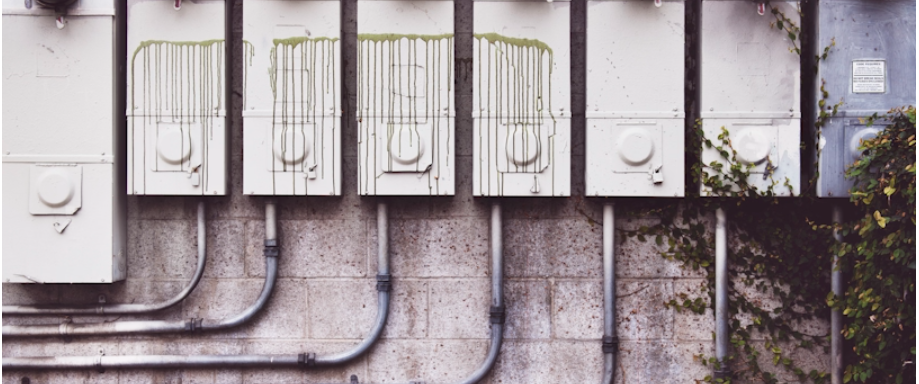The Environmental Benefits of Choosing Electrical Fiberglass Boxes Over Traditional Materials
6/1/20244 min read


Introduction to Electrical Fiberglass Boxes
Electrical fiberglass boxes represent a significant advancement in the realm of electrical enclosures. These boxes are specifically designed to house and protect electrical components, ensuring safety and functionality across various applications. Traditionally, electrical boxes have been constructed from materials such as metal and plastic. Metal boxes, typically made from steel or aluminum, are known for their durability and strength but present certain environmental drawbacks, including the energy-intensive processes required for their production and their susceptibility to corrosion, which can lead to environmental contamination.
Plastic electrical boxes, on the other hand, offer benefits like lightweight construction and ease of installation. However, their environmental impact cannot be overlooked. The production of plastic involves the use of non-renewable resources and results in significant carbon emissions. Moreover, plastic's longevity in the environment poses a long-term waste management challenge, as it does not biodegrade easily.
In contrast, electrical fiberglass boxes are emerging as a viable and increasingly popular alternative. Fiberglass is a composite material made from fine fibers of glass embedded in a resin matrix. This composition endows fiberglass with several advantageous properties, including high strength-to-weight ratio, resistance to corrosion, and excellent thermal insulation. These characteristics make fiberglass boxes suitable for a wide range of applications, from residential electrical systems to industrial and commercial installations.
Moreover, fiberglass offers a more environmentally friendly profile compared to traditional materials. The production of fiberglass involves less energy consumption and emits fewer greenhouse gases relative to metal and plastic production. Additionally, fiberglass can be recycled, further mitigating its environmental impact. As a result, the shift towards electrical fiberglass boxes not only enhances the functional performance of electrical systems but also contributes to more sustainable practices within the industry.
In the following sections, we will delve deeper into the specific environmental benefits of choosing electrical fiberglass boxes over traditional materials, exploring how this shift supports broader ecological goals and sustainable development.
Reduced Environmental Impact of Fiberglass Production
Fiberglass production offers significant environmental benefits compared to traditional materials like metal and plastic. One of the key advantages lies in the manufacturing process itself. Fiberglass is primarily made from silica sand, a renewable resource that is abundant and readily available. The production of fiberglass requires considerably less energy than the production of metals or plastics. This lower energy consumption translates directly to reduced greenhouse gas emissions, making fiberglass a more environmentally friendly choice.
The process of making fiberglass involves melting silica sand at high temperatures to form glass fibers. These fibers are then woven into mats or fabrics and combined with resins to create the final product. Unlike metal production, which often involves energy-intensive processes like mining, smelting, and refining, the creation of fiberglass is relatively straightforward and energy-efficient. Moreover, the use of silica sand helps to minimize reliance on finite resources, further contributing to the material's lower environmental footprint.
Another notable benefit of fiberglass is its recyclability. Fiberglass products can be recycled at the end of their lifecycle, reducing the need for virgin materials and promoting a circular economy. Recycled fiberglass can be used to produce new fiberglass products, thereby conserving natural resources and reducing waste. This capability is particularly important in an era where sustainable practices are increasingly prioritized.
Fiberglass also offers durability and longevity, which means that products made from this material often have a longer lifespan than those made from traditional materials. This extended lifespan reduces the frequency of replacement and, consequently, the overall environmental impact. By choosing electrical fiberglass boxes over traditional metal or plastic alternatives, consumers and industries can contribute to a reduction in both energy consumption and waste generation.
In summary, the production and use of fiberglass offer numerous environmental benefits, from lower energy requirements and reduced emissions to the promotion of a circular economy through recyclability. These factors collectively make fiberglass an environmentally responsible choice for electrical enclosures and other applications.
Long-Term Sustainability and Durability of Fiberglass Boxes
The long-term sustainability of fiberglass electrical boxes is a key factor that distinguishes them from traditional materials. Fiberglass boxes exhibit remarkable durability, making them highly resistant to corrosion, weather, and chemical exposure. This inherent resilience ensures that fiberglass boxes have a significantly longer lifespan compared to their traditional counterparts such as metal and plastic. The longevity of fiberglass electrical boxes means they need to be replaced far less frequently, which inherently reduces the environmental impact associated with manufacturing and disposal.
Traditional materials like metal are prone to corrosion, especially in harsh environmental conditions. This susceptibility often leads to frequent replacements, resulting in higher resource consumption and increased waste generation. On the other hand, fiberglass electrical boxes maintain their structural integrity even in the most demanding situations, contributing to fewer replacements over time. This aspect of durability not only conserves resources but also minimizes the environmental costs associated with the production and disposal of inferior materials.
Moreover, fiberglass boxes are impervious to many chemicals that can degrade other materials. This chemical resistance further extends their usability in various industrial and residential applications, where exposure to harsh chemicals is a common concern. The reduced need for replacement translates to diminished environmental degradation and a lower carbon footprint over the long term.
Real-world examples underscore the efficacy of fiberglass boxes in promoting sustainability. For instance, in coastal regions where saltwater corrosion is a significant issue, fiberglass boxes have outperformed traditional metal boxes by maintaining their integrity and functionality over extended periods. Similarly, in industrial settings with high exposure to corrosive chemicals, fiberglass boxes have proven to be a superior choice, drastically reducing maintenance costs and environmental impact.
In essence, the superior durability and chemical resistance of fiberglass electrical boxes contribute to their long-term sustainability. By choosing fiberglass over traditional materials, we can significantly reduce resource consumption and waste generation, leading to a more environmentally friendly and sustainable future.
